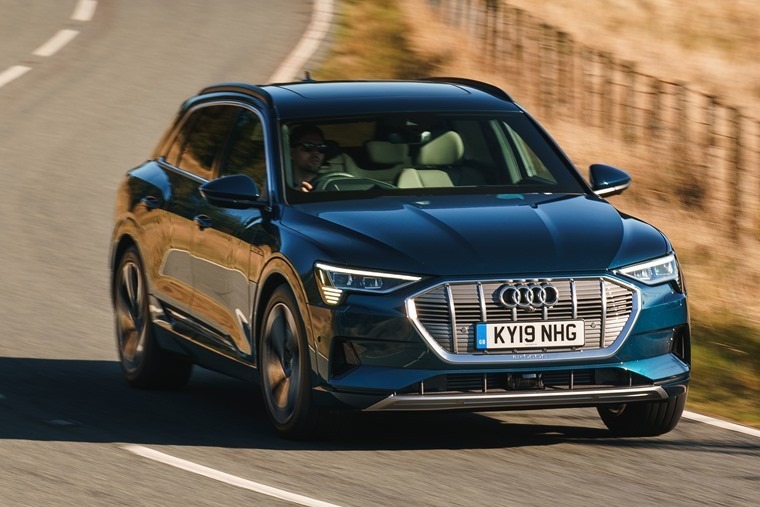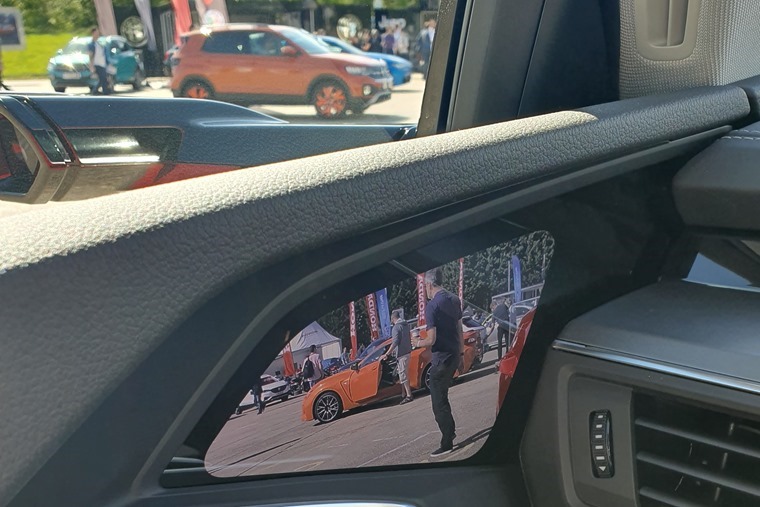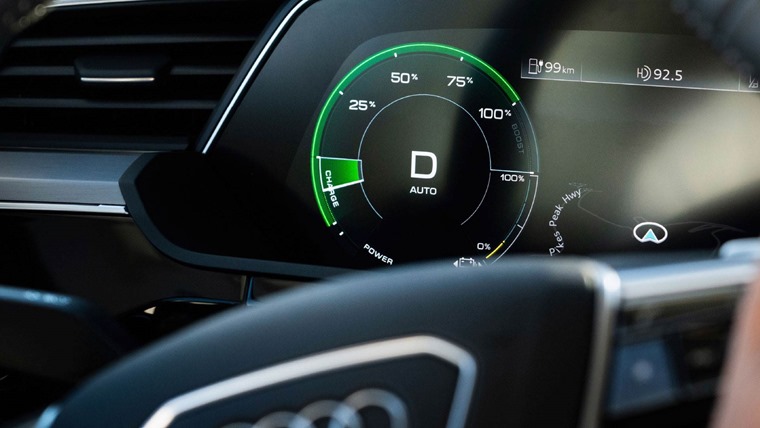Top five things we learned driving the Audi e-tron
We recently got to step into the Audi e-tron for a tantalising spin. The car surprised and excited us in equal amounts over the course of putting it through its paces along both tracks.
Here’s what we learned.
It’s the most ‘normal’ EV we’ve driven

From the outside, you’d be forgiven for thinking you were looking at a simple Q5. The reason for that is pretty simple: the firm’s larger SUVs have been a huge success in terms of volume and, given the continuing shift towards the segment Audi obviously didn’t want to mess with a winning formula.
While we championed the Hyundai Kona EV as being the car that normalises electric cars, the Audi e-tron is the car that brings an air of familiarity to the segment. It doesn’t want to blur the boundaries of what a car is and should be, it doesn’t want to look like some sketch from an ancient copy of 2000AD, it simply wants you to feel comfortable making the jump to an EV. That extends to the drive too: there are no daft driving modes, it’s just like your average Q5 albeit very sedate and smooth.
In spite of all that there is one little thing that strayed into the futuristic, albeit for very good reasons:
The wing mirrors take some getting used to

A lot has been made of Audi’s optional virtual wing mirrors, and with Honda offering them as standard on its new EV, it’s safe to say this is going to be the new norm.
Much narrower than standard mirrors, they reduce drag as well as the vehicle width by 15cm. Oh, and they’re not wing mirrors at all but cameras.
The rear-facing cameras essentially live stream what’s happening into two touchscreens embedded above the inside door handles. They also automatically adapt their view whether you’re driving on the motorway, turning in the road, or parking. The driver and passenger can even use the touchscreen to zoom-in on particular issues they spot too.
Alas, while driving I kept looking to the mirrors, then down to the screen. If this is the new norm, my brain is going to need some serious retraining!
It’s tech heaven inside

Whatever your feelings about wing-mirror cameras and new tech being implemented in cars, we’re pretty sure you’ll like how comprehensive the e-tron cabin is.
While minimalism seems to be the word when it comes to EV interiors (see the Tesla Model 3 and Honda e as recent examples), it’s business as usual for Audi. The dashboard features two MMI touchscreens making up the centre console, allowing you to control the temperature of the cabin, find charging points and navigate to a destination, while the Audi Virtual Cockpit display replaces the driver’s instruments.
Despite its bulk, it champions efficiency

Everything on the Audi is streamlined to get the most out of the battery – from the aforementioned virtual wing mirrors to the closed-off hexagonal grille at the front – meaning the range remains close to its stated 248 miles. All of this despite the fact the car weighs 2,565kg and has a wheelbase of 2,928mm.
Efficiency Assist is something that further adds to these design touches while you’re at the wheel. Working closely with the adaptive cruise control it helps you drive pre-emptively by accessing route data, that means it can detect traffic signs, other vehicles and hazards which is then relayed via the Audi virtual cockpit, instructing you when it’s best to decelerate. This adds to other elements such as regenerative braking to save battery charge and eek every last kilowatt out of the car.
It has the coolest charge point we’ve seen

Okay, so maybe this is a futuristic touch to a car which mainly errs on the side of cautious normality, but it is pretty cool, right?
The e-tron features AC charging points on both the driver and passenger wheel arches. AC is the standard for UK plugs meaning it’s probably the method you’ll use to charge your e-tron the most whether at work, home or on the go. 7.4kW charging will take around 13 hours at a rate of 17 miles per hour of charge. 11kW is the most the AC can charge by which will take nine hours at a rate of 25 miles per hour of charge.
The driver-side charge point also accepts DC ‘rapid’ charge up to 150kW, meaning you’ll get a full charge from zero with 70 minutes of use.
